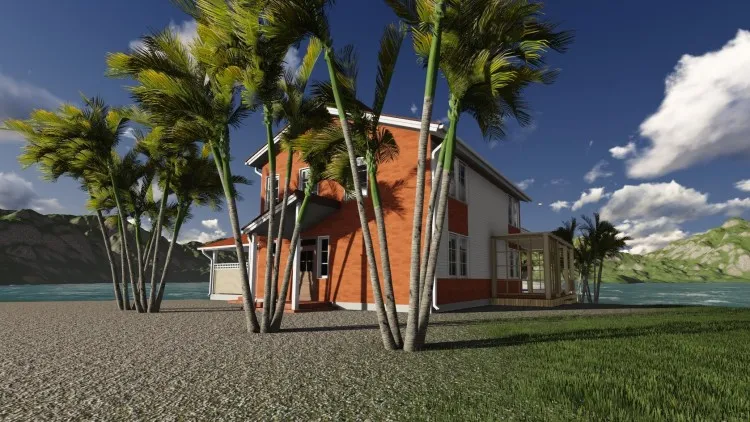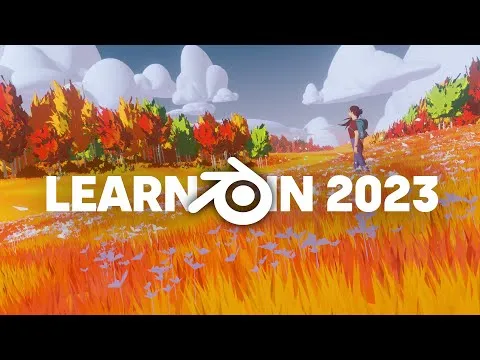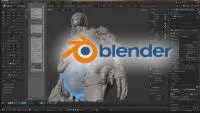
Blender To Substance Painter To Unreal Engine 4 
This tutorial provides an overview of the workflow for creating 3D assets from Blender to Substance Painter to Unreal Engine 4. It covers the necessary steps to ensure a successful transition from one program to the next. ▼
ADVERTISEMENT
Course Feature
![]() Cost:
Cost:
Free
![]() Provider:
Provider:
Udemy
![]() Certificate:
Certificate:
No Information
![]() Language:
Language:
English
Course Overview
❗The content presented here is sourced directly from Udemy platform. For comprehensive course details, including enrollment information, simply click on the 'Go to class' link on our website.
Updated in [March 06th, 2023]
This course provides an overview of the process of creating 3D assets in Blender, the most popular 3D modelling software in the world. Students will learn how to import their assets into Substance Painter, the AAA quality texturing software used by many game studios worldwide. Finally, students will learn how to import their assets and the textures they created into Unreal Engine 4. By the end of the course, students will have a comprehensive understanding of the process of creating 3D assets and textures for use in Unreal Engine 4.
[Applications]
The application of this course can be seen in the creation of 3D assets for video games. After completing this course, users will have the knowledge and skills to create 3D assets in Blender, texture them in Substance Painter, and import them into Unreal Engine 4. This course is also beneficial for those who are interested in learning more about the game development process. Additionally, users can apply the skills they learn in this course to other 3D software and game engines.
[Career Paths]
1. 3D Modeler: 3D modelers create 3D models for video games, movies, and other digital media. They use software such as Blender to create 3D models from scratch or modify existing models. As technology advances, 3D modelers are increasingly using motion capture and 3D scanning to create more realistic models.
2. Texture Artist: Texture artists use software such as Substance Painter to create textures for 3D models. They use a variety of techniques to create realistic textures that can be used in video games, movies, and other digital media. As technology advances, texture artists are increasingly using procedural techniques to create more realistic textures.
3. Level Designer: Level designers use software such as Unreal Engine 4 to create levels for video games. They use a variety of techniques to create levels that are visually appealing and fun to play. As technology advances, level designers are increasingly using procedural techniques to create more realistic levels.
4. Game Developer: Game developers use a variety of software and techniques to create video games. They use software such as Blender, Substance Painter, and Unreal Engine 4 to create 3D models, textures, and levels for their games. As technology advances, game developers are increasingly using procedural techniques to create more realistic games.
[Education Paths]
1. Computer Science Degree: Computer Science degrees provide students with the knowledge and skills to develop, design, and maintain software and hardware systems. This degree is becoming increasingly important as technology advances and more businesses rely on computer systems. With a Computer Science degree, students can specialize in areas such as artificial intelligence, computer graphics, computer networks, and software engineering.
2. Game Design Degree: Game Design degrees provide students with the skills to create and develop video games. This degree focuses on the design, development, and production of video games. Students learn how to create game mechanics, design levels, and develop storylines. With a Game Design degree, students can specialize in areas such as game programming, game art, game audio, and game production.
3. Digital Media Degree: Digital Media degrees provide students with the skills to create and develop digital media. This degree focuses on the design, development, and production of digital media. Students learn how to create digital media content, design interactive experiences, and develop digital media strategies. With a Digital Media degree, students can specialize in areas such as digital media production, digital media marketing, and digital media analytics.
4. Animation Degree: Animation degrees provide students with the skills to create and develop animated content. This degree focuses on the design, development, and production of animated content. Students learn how to create animated characters, design storyboards, and develop animation pipelines. With an Animation degree, students can specialize in areas such as 3D animation, motion graphics, and character animation.
Course Syllabus
Basic Blender Controlls
Adding Image
Axe Handle
Axe Head
High Polly
Color ID Map
Blender Export
Pros & Cons

Straight to the point.

Explains everything in a short period of time.

Clear to follow and emphasis on key words.

Superficial and not very informative.

Instructor lacks some knowledge.

Tutorial is for Blender 79.
Course Provider

Provider Udemy's Stats at AZClass
Discussion and Reviews
0.0 (Based on 0 reviews)
Explore Similar Online Courses

Siemens Solid Edge Training & Certification - Part 1 - 2022

Intro to Lumion

Python for Informatics: Exploring Information

Social Network Analysis

Introduction to Systematic Review and Meta-Analysis

The Analytics Edge

DCO042 - Python For Informatics

Causal Diagrams: Draw Your Assumptions Before Your Conclusions

Whole genome sequencing of bacterial genomes - tools and applications

The BEST Way To Learn Blender in 2023!!

Blender 3D: Create Animate and Sell Game objects

Learn Blender for Beginners for free part 2
 Related Categories
Related Categories
 Popular Providers
Popular Providers
Quiz
 Submitted Sucessfully
Submitted Sucessfully
1. What software is used to make assets in this course?
2. What software is used to texture assets in this course?
3. What software is used to import assets and textures into in this course?
4. What is the most popular 3D modelling software in the world?
Correct Answer: Blender


Start your review of Blender To Substance Painter To Unreal Engine 4